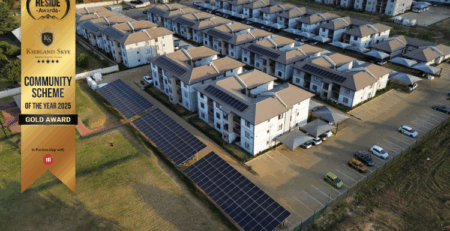Untangling ownership and responsibility for water-heating installations in sectional title schemes
Water-heating installations are one of the most common sources of confusion and dispute in community schemes. Trustees, owners, and managing agents regularly ask the same question: who owns what, and who is responsible for when things go wrong? It is thus of utmost importance to properly be able to distinguish between equipment that belongs to the Body Corporate as part of the common property, and equipment that is owned by a third party and installed under contract, as different ownership attracts different responsibilities and financial implications.
At first glance, the answer seems simple, the Body Corporate owns the installation because it is located on common property However, once one begins to unpack the applicable legislation that governs community schemes within South Africa, particularly Prescribed Management Rule (PMR) 31(1) of the Sectional Title Schemes Management Act (STSMA), it becomes clear that ownership and responsibility of these installations are not always so straight forward – and it is thus important to distinguish between these different options as set out below:
- Installations owned by the Body Corporate.
- Installations owned by a third party and installed under an Agreement;
- Hybrid Environments
1. Body Corporate Ownership
Where one is clarifying situations whereby installations remain property of the Body Corporate – PMR 31(1) becomes applicable:
- Ownership: A water-heating installation, together with all associated apparatus (pipes, valves, geysers, controllers, etc.), forms part of the common property and thus ownership remains with the Body Corporate.
- Insurance: Because it is common property, the installation is covered under the Body Corporate’s insurance policy. As laid out in the STSMA, a Body Corporate is required to have an active insurance policy in place at all times in order to remain compliant with the governing legislation.
- Responsibility for upkeep: If an installation serves only one section or exclusive-use area, the benefiting owner must maintain, repair, and, where necessary, replace it. If in turn the installation services multiple sections, the costs are shared pro-rata between the applicable parties.
This creates a split – Ownership vests in the Body Corporate, but maintenance obligations rest with the benefiting owner(s). This in turn requires both parties to adhere to and carry out the necessary responsibilities that come with this form of ownership.
This means ownership of the water-heating installation vests in the Body Corporate, but the duty of upkeep is placed on the benefiting section owners. The practical implication is that an owner cannot claim the right to control or alter a water-heating installation simply because it serves their section. Their duty is limited to maintenance only.
Any decisions regarding installation, upgrades, or structural changes to the installation remain within the powers of the Body Corporate’s, to be exercised in line with the common property provisions and with the authority of members (for example, under PMR 29(2) where a reasonably necessary improvement is involved).
2. Installations owned by a third party and installed under an Agreement
In recent years, it has also become a popular option for schemes to enter into Agreements with specialist service providers that undertake to install energy-saving or monitoring equipment such as smart meters, geyser controllers or on demand management devices which are generally installed on the scheme’s common property areas.
This presents a different type of ownership structure when compared to the 1st type of ownership option discussed above. In the current scenario where an Agreement has been entered into with a specialist service provider -the following becomes applicable:
- Ownership: Equipment installed under an Agreement remains the property of the third party even though it is physically located on the common property. The third party will generally also cover the installation costs associated with this equipment being implemented at the community scheme. Ownership never vests with the Body Corporate, however.
- Authority to install: The Body Corporate authorises the installation in terms of PMR 29(2), by way of a 30-day notice of improvements or via a special resolution. Both these mechanisms provide a platform to allow any members of the Body Corporate to request additional information or clarity pertaining to the proposed installation – or in certain instances request a General Meeting to be held before voting on the matter.
- Responsibility for upkeep: Maintenance, repair, and replacement of this equipment generally fall to the third party, not the owners or the Body Corporate. This allows a large portion of risk as well as capital the Body Corporate would have had to outlay to be carried by a third party (in this case the installer) and may negate for example, the Body Corporate needing to raise a Special Levy to fund the installation or utilise its Reserve Funds
Whilst at first glance, PMR 31(1) may seem irrelevant in this instance since this rule allocates maintenance obligations only where the Body Corporate owns the installation outright. However, it is important to take note that the rule still plays an indirect yet important supporting role. By confirming that the benefiting owner’s obligation is limited to upkeep (not control), PMR 31(1) reinforces that owners cannot interfere with third-party equipment. Any attempt to tamper with, remove, or replace it would undermine both the Agreement and the resolution authorising the installation and may have negative contractual or legal consequences for the Body Corporate or the applicable owner in question
3. Hybrid Environments
The last option to be reviewed and examined is that of Hybrid Environments in terms of equipment ownership within community schemes. At present, many schemes are already operating with a hybrid environment, for example where the geyser itself may be owned by the Body Corporate as common property, while monitoring devices, efficiency upgrades, or controllers are owned and maintained by a third party, generally under an ESMA type Agreement. PMR once again becomes applicable, for example in this type of scenario:
- The geyser is Body Corporate property, with the benefiting owners responsible for upkeep under PMR 31(1).
- The controller is third-party property, with the service provider responsible for upkeep under the Agreement.
- The owner may not interfere with either element, PMR 31(1) prevents interference with the Body Corporate’s installation, and the agreement protects the third party’s rights.
These Hybrid environments highlight the importance of distinguishing between ownership and responsibility. Community schemes need to be aware that just because equipment is located in or attached to a unit does not necessarily mean the owner is free to control it. PMR in conjunction with the Agreement thus plays a critical role in dictating where the applicable responsibility lies.
Practical implications for trustees and owners
For trustees and managing agents, clarity on ownership and responsibility is essential to avoid uncertainty which may result in conflict or disputes between the parties. This clarity also ensures that the relevant provisions of both the STSMA and PMR are correctly applied and adhered to.
As a result of such – some practical steps for community schemes to include could be the following:
- Clarify and confirm ownership: Is the equipment part of the original installation (common property), or was this added later under a separate agreement?
- Refer back to PMR 31(1): If the Body Corporate owns the installation, owners are responsible for upkeep if it serves only them.
- Review the agreement terms: Where a third party owns the equipment, confirm that the contract clearly allocates maintenance obligations and prohibits owner interference.
- Communicate with owners: Many disputes arise simply because owners assume that “if it’s in my unit, it must be mine.” It is thus essential that a clear explanation of ownership versus responsibility is communicated in order to manage all parties’ expectations.
- Document hybrid arrangements: In mixed scenarios, trustees should maintain records identifying which components are Body Corporate property and which belong to the service provider.
Living in a community scheme comes with many benefits, but in turn this type of ownership and the different roles and responsibilities that are associated with this may lead to uncertainty and confusion – especially in the case of installations such as water heating where each scheme may present a different type of ownership model and there is no one size fits all approach.
Ultimately, the key to avoiding conflict lies in recognising that ownership determines responsibility. It is thus important that all role-players within the community scheme from Trustees to Owners to Managing Agents should have a clear understanding of these distinctions and the type of ownership in place at their specific property. This will in turn allow for equipment such as water-heating installations are properly managed, maintained and that disputes are avoided allowing the community schemes to operate effectively and ensure clear understanding between all role-players involved






